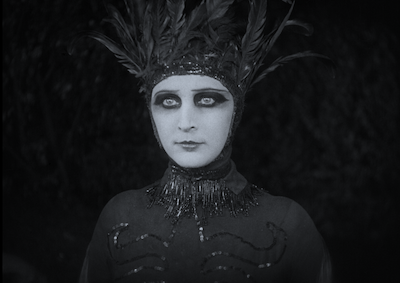Admission is free. No advance reservations. Seats are available on a first come, first served basis. Hammer Museum members will have reserved seating available at the box office. The box office opens one hour before the first program of the day.
Live musical accompaniment by Cliff Retallick.
A Midsummer Night’s Dream
Ein Sommernachtstraum, Germany, 1925 / U.S., 1928
Los Angeles restoration premiere
One of the last adaptations of Shakespeare in the silent era was released in Germany in 1925 as Ein Sommernachtstraum, then in North America in 1928 as A Midsummer Night’s Dream. Long considered a lost film, the North American version was discovered in Oregon in 2010, buried under a cellar floor and coated in machine oil. The UCLA Film & Television Archive, with help from fellow archivists in Germany and Austria, augmented the print with film fragments, stills and the original German intertitles in this hybrid restoration.
As the Athenians prepare for the marriage between Duke Theseus of Athens (Theodor Becker) and the Amazon queen, Hippolyta (Ruth Weyher), mischievousness abounds in the nearby woods. A band of would-be thespians rehearse their first play and two pairs of lovers rendezvous while the elf king, Oberon, his queen, Titania, and the impish Puck wreak havoc.
The script takes liberties not only with the original play but also with social conventions. In Shakespeare’s day, the company was composed entirely of male actors; it was illegal for women to act professionally until 1661. In the play within the play, the mustachioed Flute plays the virgin Thisbe, but two roles generally performed by men are played by women: Valeska Gert, in her film debut as Puck, and Tamara Geva, a 17-year-old Russian dancer, as Oberon.
A converted Zeppelin hangar served as the enormous Staaken Studios where Hans Neumann achieved what German newspaper B.Z. am Mittag described as “a masterpiece of directing technique.” The fairytale woods come alive with double exposures and actors popping in and out of the picture, all of which was amazingly done in camera. The skillful use of light and shadow and superimposition serves to confuse: what is real and what is imagined is the question continually being asked of the players and the audience.—Miki Shannon
DCP, b&w and tinted, 74 min. Director: Hans Neumann. Screenwriters: Klabund, Hans Behrendt, Hans Neumann. Based on the play by William Shakespeare. With: Werner Krauss, Ruth Weyher, Theodor Becker, Valeska Gert, Tamara Geva.
Restoration funded by the Hobson/Lucas Family Foundation. Restored by the UCLA Film & Television Archive and The Film Foundation from a 35mm nitrate silent tinted print. Laboratory services by Roundabout Entertainment, Inc., FotoKem. Special thanks to Oliver Hanley, Henry Esau.
Special thanks to our community partners: Retroformat Silent Films, The Silent Treatment, UCLA International Institute.
Watch before-and-after restoration clips:






 Mobile Navigation
Mobile Navigation

